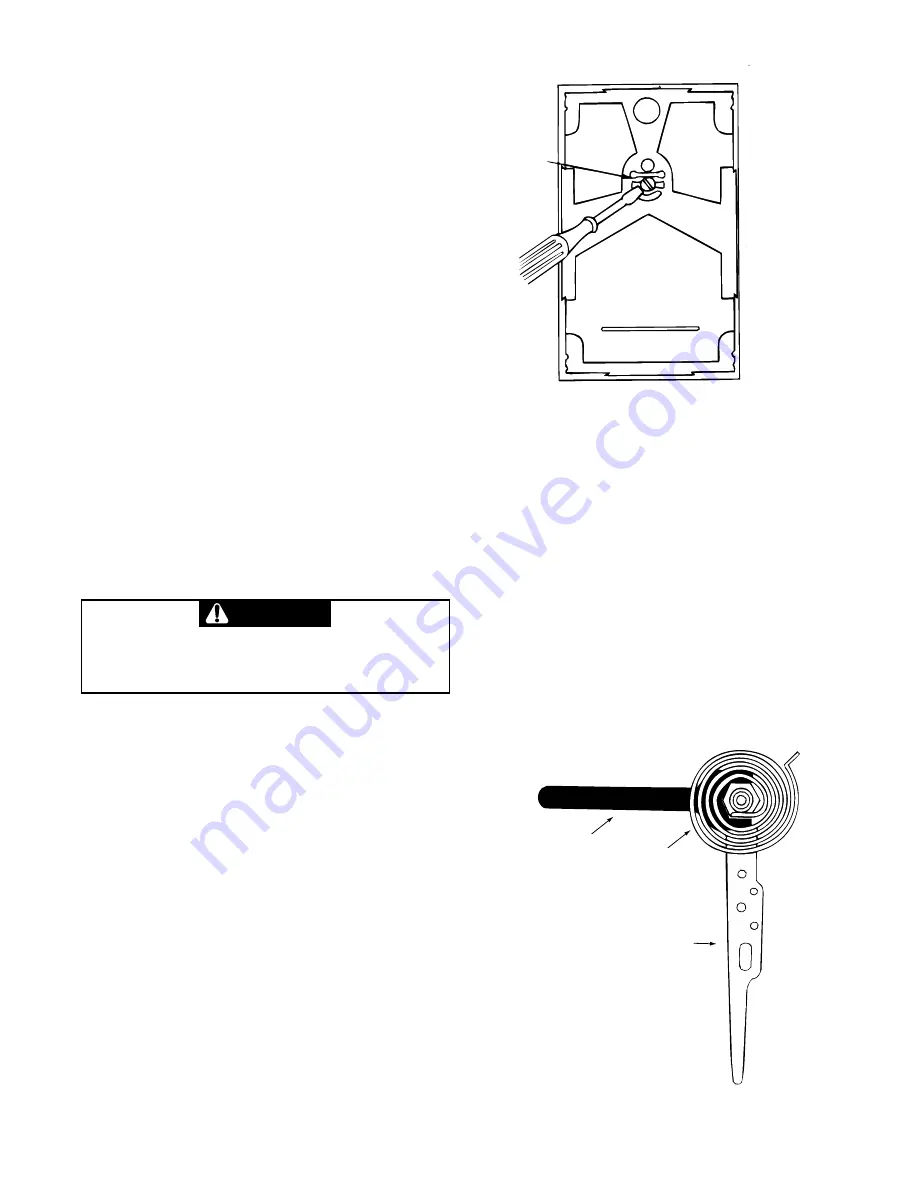
CALIBRATING THERMOMETER ON
THERMOSTAT COVER
If thermometer reading on cover does not match
thermostat:
1. Remove thermostat cover.
2. Set cover on table near an accurate thermometer.
3. Allow at least 10 minutes for thermometer to sense
room temperature.
4. If the thermometer readings are different, insert a small
screwdriver blade into the thermometer shaft in the
back of the cover. Adjust until the cover thermometer
matches the other thermometer (see Fig. 5).
5. Replace thermostat cover.
CALIBRATING THERMOSTAT
This thermostat has been carefully adjusted at the factory
and should not require recalibration.
Due to enivronmental conditions, during normal operation
there may be a few degrees difference between the
indicator setting of the thermostat and actual room
temperature. If the disagreement is appreciable, however,
first make sure that the thermostat is properly located and
leveled. Then, if recalibration still seems necessary,
proceed as follows:
CAUTION
To prevent electrical shock and/or equipment
damage, disconnect electric power to system
until recalibration is complete.
1. The anticipator's heat may adversely affect thermostat
recalibration. To prevent this, disconnect electrical
power to thermostat at furnace, main fuse, or breaker
box.
2. Move temperature adjustment lever to a setting about
5
°
above room temperature.
3. Remove thermostat cover. Slip 7/32" wrench onto hex
nut beneath bimetal. While holding temperature
adjustment lever stationary, turn hex nut clockwise
until mercury shifts to right end of tube (see Fig. 6).
4. Move temperature adjustment lever to lowest setting.
5. Replace thermostat cover. Wait 10 minutes for bimetal
temperature to stabilize. Do not stand near thermostat
during this period as your breath and body heat will
affect bimetal temperature.
6. Move temperature adjustment lever to correspond to
actual room temperature. Then remove thermostat
cover.
7. Slip 7/32" wrench onto hex nut. While holding
temperature adjustment lever stationary, turn hex nut
counterclockwise until mercury just barely shifts to left
end of tube (see Fig. 6).
8. Replace cover and set thermostat to desired
temperature. Turn on electrical power to system.
7/32" Calibration
Wrench
Bimetal
Temperature
Adjustment
Lever
Figure 6. Calibrating Thermostat
Figure 5. Calibrating Thermostat Thermometer
Back Side of Thermostat Cover
Thermometer
Adjustment


























